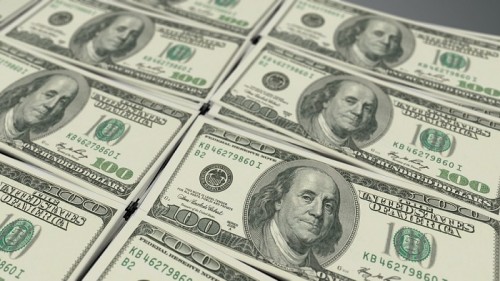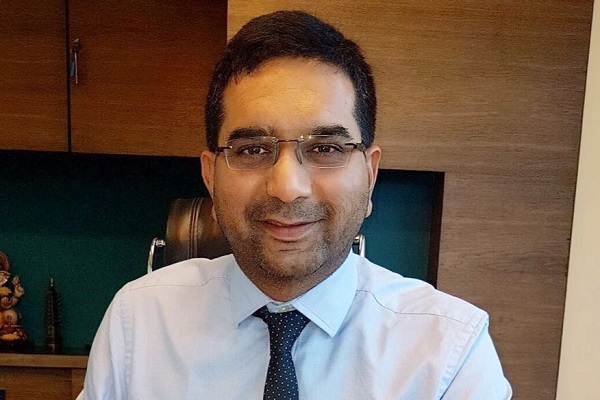Importance of Forex reserves and why RBI is hoarding reserves presently by Heena Naik, Angel Broking Ltd

Below are Views On Importance of Forex reserves and why RBI is hoarding reserves presently by Heena Naik, Research Analyst - Currency, Angel Broking Ltd
Importance of Forex reserves and why RBI is hoarding reserves presently
For a country whose currency follows a floating exchange regime like India, the role of foreign exchange reserves becomes highly important. In basic terms, foreign exchange reserves consist of essential assets held by a country's central bank. These reserves are typically used for keeping the exchange rate in a stabilized range, to maintain liquidity in case of an economic crisis and to ensure that a country meets its foreign obligations and liabilities. Forex reserves also provides confidence to the foreign investors that the central bank is ready to take action to protect their investments. In India, the forex reserves include four components i.e. the Foreign Currency Assets (FCA), Gold, Special Drawing Rights (SDR) and Reserve Position in the IMF.

Coming to India’s forex reserves trajectory which has taken the markets by surprise. Apparently, the reserves have ballooned to an astonishing level. In two years’ time i.e. from 2019 till now, the RBI has managed to buy around $ 128 billion reserves. Out of this $128 billion reserves, most of the major buying of around $ 102 billion was seen only after Mar’2020 – the month when India was first introduced with Covid-19 virus. The pandemic had sent shockwaves across the global markets while global economic had a major fallout.

With respect to India, both Sensex and Nifty tumbled while the Indian Rupee weakened sharply creating a panic like situation for all the Indian importers. During this time, the RBI tried their level best to curb the sharp weakness in the Indian currency by selling dollars via-state-owned banks. Not only this, in order to provide relief to the markets the RBI infused liquidity into the system and made an emergency rate cut and reduced reverse repo rate and cash reserve ratio. The central bank also provided a massive relief for the middle class by announcing that lenders could give a moratorium of 3 months on term loans. There were many other relief measures undertaken by the RBI and the Finance Ministry.
Post this, the local equities slowly and steadily balance itself out and moved north. Moreover, stake sale by Reliance also helped bring in inflows into the system helping the local equities to move up. Indian Rupee also performed well by appreciating, giving a sigh of relief to all the importers who were initially in a panic mode when the deadly pandemic was out. On parallel lines, the RBI later stopped selling dollars and instead was on the lookout of increasing their forex reserves due to increase in FII and FDI inflows into the country. On the other hand, the fall in crude oil prices has brought down the oil import bill, saving the precious foreign exchange. Similarly, overseas remittances and foreign travels had also fallen steeply which led to decline in dollar outflows. The forex Reserves currently stands at $589.46 billion as on 14th May’21.

The comparative chart above is taken from the RBI monthly bulletin released last month (Apr 2021) which shows how each of the component of reserves has performed from April 2020 until April 2021. The rise in reserves was on account of an increase in foreign currency assets (FCAs), a major component of the overall reserves. It increased from $ 441.8 billion (Apr 2020) to $ 540.5 billion (Apr 2021). Expressed in dollar terms, the foreign currency assets mostly include assets like US Treasuries etc in the foreign exchange reserves.
It is also being seen that RBI has been actively purchasing gold to keep it as reserves. Currently, the central bank holds 695.31 tonnes of gold which makes it rank 10th globally in gold holding. While the quantity of holding is less than that of the US, Germany and France, it is far higher than other emerging economies, with the exception of China. Normally countries increase their gold reserves to reduce the dominance of the US over the global economy by reducing the usage of US Dollars in their external transactions.
As mentioned above the prime reason for a country to increase its forex reserves is to provide protection from external shocks. With India’s battling 2nd wave of coronavirus with 3rd wave predicted to come in the coming months, it is very important for the RBI to keep its reserves handy. There will be many hiccups seen in the economic activities which shall hamper the economic indicators and the earnings report of the companies. Foreign investors too shall play safe. Any sharp movement in the local unit could definitely invite
the RBI who has recently stressed it commitment to intervene the markets to facilitate smooth volatility in the forex market. In the near-term (1-month view), we are expecting the Indian Rupee to weaken towards 75 mark. The weakness shall not be abrupt but in a steady manner on back of RBI intervention.
To Read Complete Report & Disclaimer Click Here
Above views are of the author and not of the website kindly read disclaimer
















